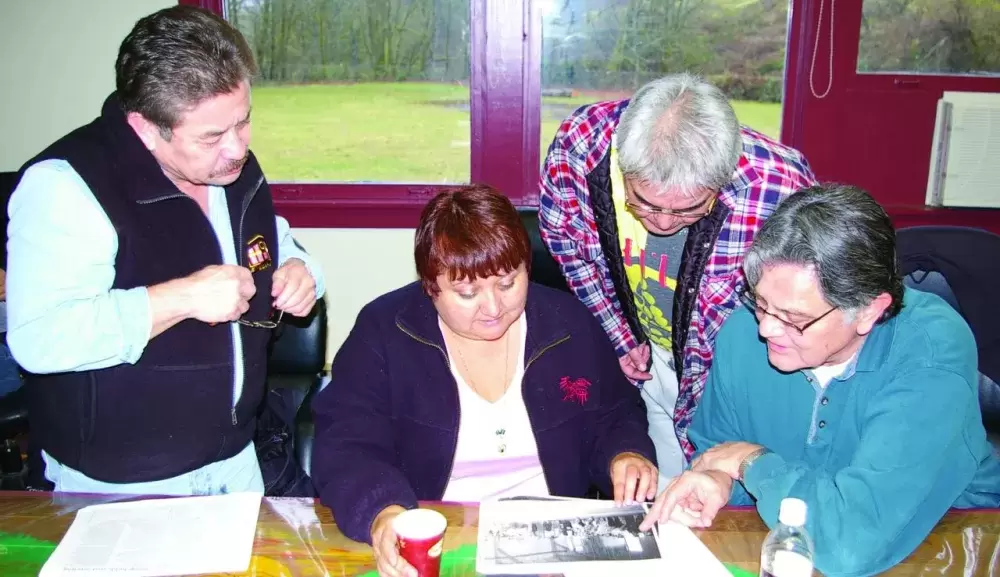Representatives from the University of British Columbia’s Museum of Anthropology came to the west coast last week to show their Nuu-chah-nulth collection and ensure their titles and descriptions are correct.
“I’m always suspicious of descriptions written by collectors or museum people, so we’re here to find out from you what these things are, what they represent, and what they would have been used for,” curators Karen Duffek told the 20 people gathered at the Tseshaht treaty boardroom.
The UBC Museum of Anthropology is embarking on “a partnership of peoples” program, and plans to improve their facility, and the way collections are shown. They also plan to improve accessibility to their collections by developing computer-based archives, improved research areas, and an Elders lounge.
“We want to work with Nuu-chah-nulth over the next few years to make sure materials are respectfully displayed, stored, cared for, and named,” said Duffek.
The MOA has 657 objects identified as being Nuu-chah-nulth, of which 38% are baskets and woven items, 12% are silkscreen prints, and 10% are masks and headdresses. Only 112 items are listed with their specific community of origin, or the makers or original owners names.
Duffek and fellow curator Pam Brown presented a slideshow of many historical pieces, along with binders filled with photos and descriptions.
Representatives from Ditidaht, Uchucklesaht, Tseshaht, and Toquaht were on hand to view the pictures and offer insights into the use and origins of artifacts.
“I think it’s a great thing you’re doing, trying to understand what these things actually are rather than depending on what someone else described them as,” said Tseshaht’s George Clutesi, whose father’s paintings were the first contemporary artifacts ever purchased by the Museum of Anthropology.
Museum of Anthropology curators will be meeting with many First Nations groups over the next few months as part of a program funded by the Canada Foundation for Innovation.
By David Wiwchar
Ha-Shilth-Sa Reporter







